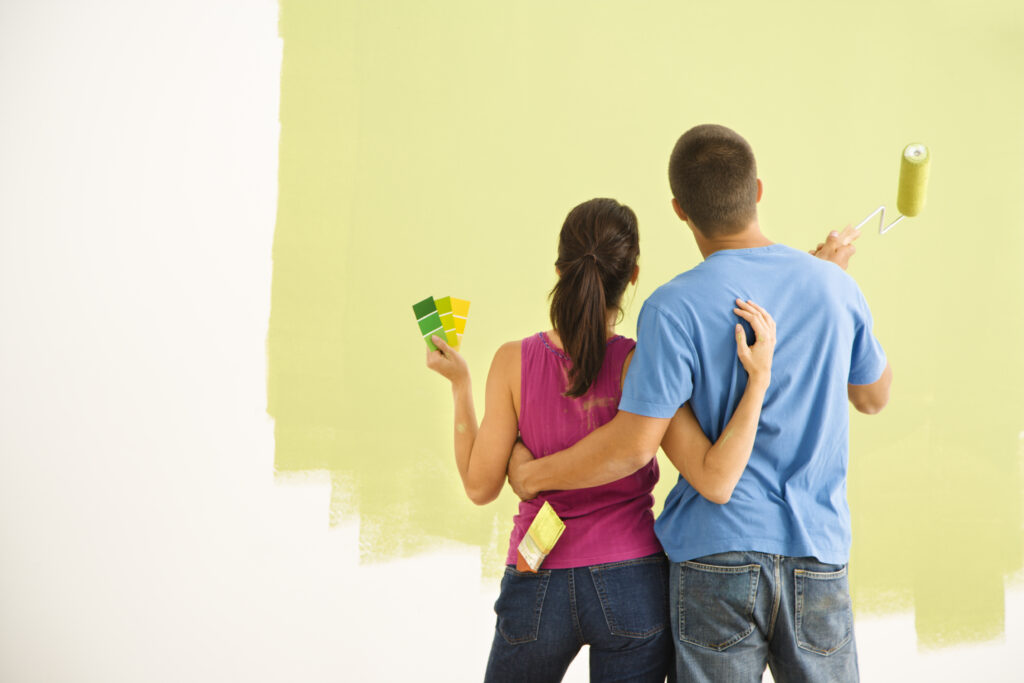Thinking about investing in some refurbishments to help boost your homes value for resale?
Be warned: Some home improvements, particularly when they are done with resale in mind, can actually hurt your homes value. Here, GOBankingRates.com offers a look at some renovations to avoid if you want to increase, rather than hurt, your homes value.
1) Luxurious Lighting
From ceiling-mounted lights in a dining room or a hanging pendant, lavish light fixtures might be exciting and new, but they often don’t match the big picture. Trendy lighting can work against homeowners, looking out of date in the long run. When purchasing lighting, always remember: Simple is best.
2) An Abundance of Wallpaper
Patterned and textured wall coverings can be overwhelming to prospective buyers seeking a move-in ready home. It also can be difficult to remove. Instead, consider removing wallpaper and going with fresh paint and neutral colors before any showings or open houses.
3) Texture on the Walls and Ceilings
Fancy textured painting techniques also can be difficult to remove. If potential homeowners know they may be faced with a time-consuming project, it might cause then to decrease their offer. Instead, try textured wall décor.
4) Quirky Tiling
Over-personalized renovations can hurt a homes value, particularly something like tiling that requires effort and money to replace. Instead, think about upgrading the flooring in your home by adding tile or wood and adding a stylish rug.
5) Too Much Carpeting
Carpet can quickly show signs of damage compared with hardwood and laminate floors. Colors and textures also are highly based on personal preference.
6) Bright and Bold Paint Colors
Repainting a room before putting your home on the market is an easy fix. When choosing colors, its important to select neutral tones to present potential buyers with a blank canvas that can help them envision themselves decorating your home in their style.
7) Extremely High-End Kitchen
Don’t spend too much on a project that won’t give you a return on investment. Instead, focus on the portions of the kitchen that are the most outdated or worn and consider selecting mid-range appliances rather than expensive, high-end options.
8) Over-the- Top Bathroom
Potential buyers could be scared off by over-personalized finishes and over-the- top whirlpool tubs that are hard to clean and hard for some people to navigate. Instead, consider a walk-in shower to appeal to a wider audience.
9) Home Office Conversion
If the new office space previously was a bedroom, this could be a costly mistake. Convert a bedroom into anything other than a bedroom can devalue your property. If you insist on using a bedroom space for a home office, avoid bulky built-in desks or shelving units.
10) Combining Bedrooms to Create a Bigger Room
Combining two small bedrooms to create a bigger room might seem like a great idea to a young couple with no children or to empty nesters, but it can be bad for potential owners who plan on staying in the home forever. Most families want children to have their
own rooms, even if they are small. Instead, try simple tricks like lighter colors and modern, slim furniture to make your bedroom space seem larger.
11) Removing Closets
Removing a closet to make room for another upgrade, such as a larger bathroom or bedroom, can hurt a home’s resale value. Closets are a definite must.
12) Sunroom Addition
A sunroom addition is one of the worst home renovations when it comes to return on investment, according to Remodeling.hw.net. In 2015, the national average mid-range sunroom addition cost $75,726 and only had a resale value of $36,704.
13) Built-In Aquarium
A built-in aquarium can require constant maintenance and can be costly to remove. Instead, choose a standard fish tank to avoid any issues down the line.
14) Built-In High-End Electronics
An in-house theater is ideal for a movie-lover, but built-in or customized electronics that take up space in an otherwise usable room could turn off potential buyers. Built-in technology can become outdated quickly.
15) Swimming Pool
A pool could increase a home’s value by only 7 percent at most, according to HouseLogic. Generally, they are more trouble than they're worth, especially when you weigh the building and maintenance expenses versus the minor potential value increase.
16) Hot Tub
Hot tubs take up space and require constant maintenance. Homebuyers with children also might consider a hot tub a safety hazard. Consider a portable hot tub rather than a built-in hot tub.
17) Garage-to- Gym or Living Space Conversion
Many people searching for houses with a garage aren’t looking for a gym or an extra living space but to house cars and storage items. Be sure future homeowners can easily and inexpensively remove the renovations.
18) The Wrong Landscaping Investment
Curb appeal is great. However, costly landscaping decoration will not increase the value of your home but increase the maintenance required. Keep your gardens beautiful but simple and easy to maintain.
19) Beautiful But Messy Trees
Do your research before planting anything, as homeowners always are on the lookout for any trees with leaves or flowers that might create a mess. Trees to avoid include oak, female Ginkgo biloba, sweet gum, locust and Eastern white pine. Instead, choose
trees like an Eastern red cedar, crepe myrtle or Colorado blue spruce.
20) DIY Repairs
DIY jobs can decrease a home’s value, especially those with shoddy workmanship and that have been left unfinished. Always hire a professional.
